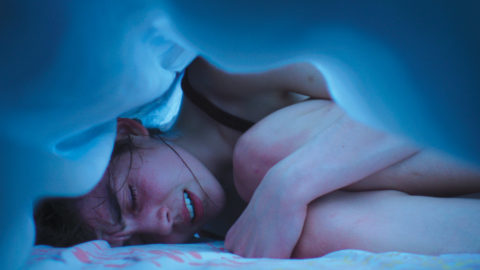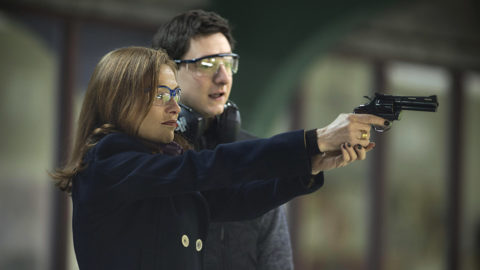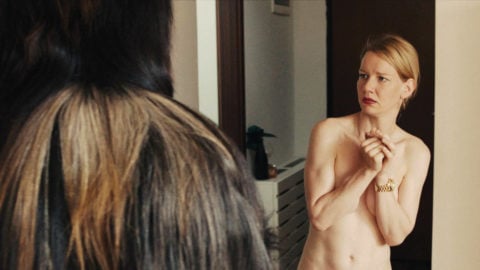By Kent Jones in the July-August 2016 Issue
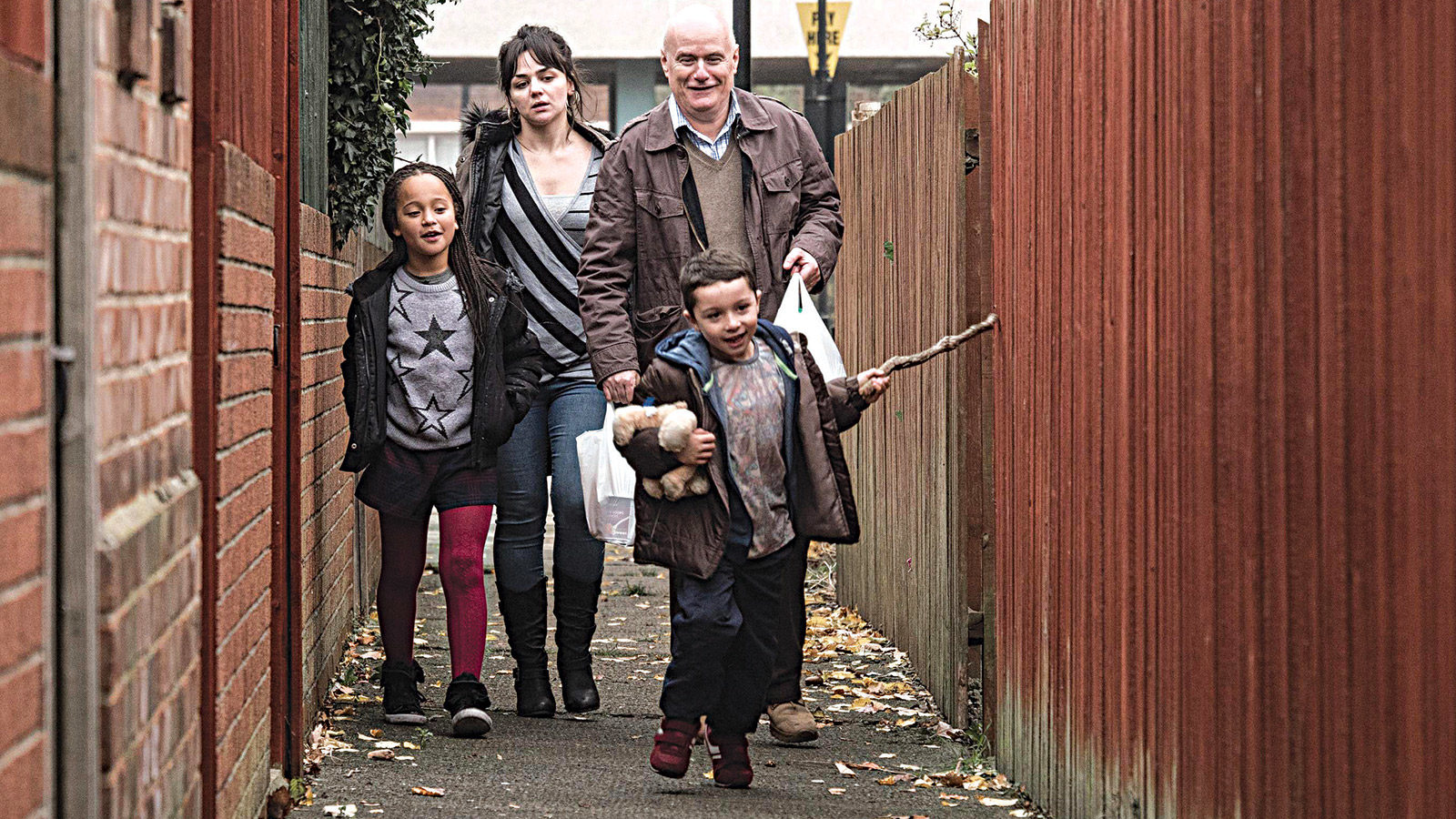
The Shock of the Real
The art of life as lived shined through at Cannes
If I were hard-pressed to sum up the Cannes Film Festival in one word, it would have to be “trudge.” “To walk laboriously, wearily, or without spirit, but steadily and persistently,” reads the OED entry. The origin dates to the 16th century, but it could have been coined on the Croisette. At any given moment, one is highly likely to catch a glimpse of this laborious, dispirited semi-sprint, resulting from a perfect mixture of jet lag and exasperation. The typical journey from one screening to another involves a herding through a narrow passage followed by the trudge followed by another herding through another narrow passage followed by a lunge for a decent seat, an exercise soon to be repeated. As for the bag checks and magic-wandings and daily guessing games about entry and exit points and extravagantly roundabout routes necessitated by the exponentially increased security, it all settles into a vaguely unsettling undertone, like the hum of fluorescent lights on the fritz. As for the red carpet, the rousing theme music and the announcer with the mellifluous baritone gamely attempting to pump a little drama into every arrival (“Et maintenant…le Maire de Cannes…grand fan de rock and roll… Monsieur Daniel Lisnard!”), it’s just room tone. Through it all, an ongoing diagnosis of “the festival” runs like so much lukewarm water through a sieve.
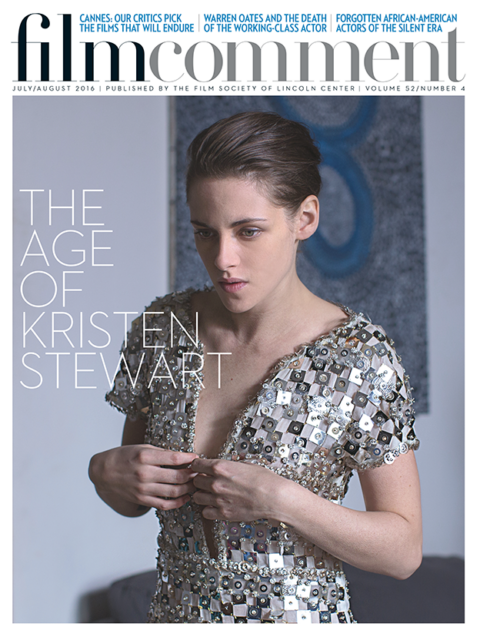
From the July-August 2016 Issue
Also in this issue
And then there are the actual films. At the press screenings, there are close-knit groups of critics, but everyone reacts alone (it has something to do with the lighting and the acoustics, the dead air between people 10 inches away from one another). Only on the rarest of occasions does the experience become genuinely communal, and rarer still is the communal experience in sympathy with the film—more often, it’s a bloodbath on the order of The Brown Bunny or Southland Tales.
I have heard rounds of applause at press screenings, on a few occasions in mid-film. But I have never witnessed applause building in waves. This occurred during a scene about three-quarters of the way through Maren Ade’s Toni Erdmann. I won’t describe the scene because a) it would spoil the surprise and b) you’ll know it when you see it. I’ve been waiting patiently for this movie during the seven long years since Ade’s Everyone Else, during which time she’s had two children, produced or co-produced numerous films (including Miguel Gomes’s Tabu and Arabian Nights and her partner Ulrich Köhler’s Sleeping Sickness), and taken her time creating a film that is abundant in so many of the qualities lacking in modern cinema, not the least of which are a continual deepening of character, moment-to-moment surprise, and genuine warmth.
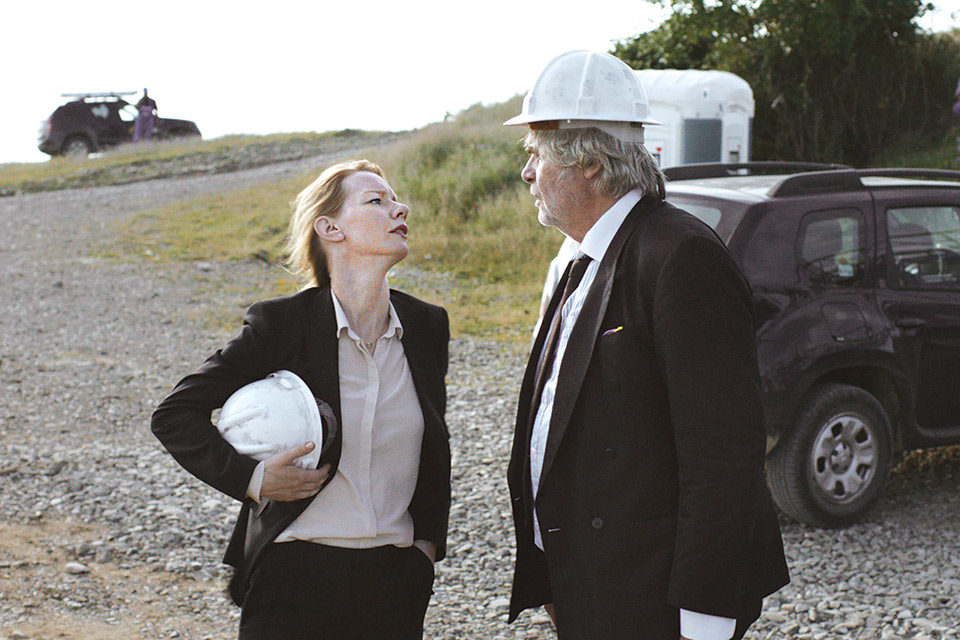
Toni Erdmann
Like Everyone Else, Toni Erdmann is a behavioral suspense story in which one character assumes the task of cracking the shell of another’s hardening false consciousness. In the previous film, it was a young woman and her boyish lover. Here, the agent of destruction is a small-town music teacher (Peter Simonischek) who recognizes that his daughter (Sandra Hüller), a management consultant whose killer instincts are growing in alignment with her sycophancy, is in spiritual danger and takes it upon himself to shock her back to her senses by making his own slovenliness, annoying antics, and sheer inconvenience—the very stuff of so many parent-child conflicts—his weapons of choice. This kind of conflict is periodically milked bone-dry in lousy American movies, but Toni Erdmann is to such vintage Hallström-Lifetime-sitcom stuff as Faces is to Love, American Style.
Think of The Philadelphia Story, but with the father assuming the task of the ex-husband; the woman not as a wife-to-be but out on her own, trying to individuate in the shadow of a semi-bohemian father with a “big personality,” cast adrift in the brutal world of contemporary business; and her education not as a sudden alcohol-induced dawning but a behavioral grudge match. Reimagine it all within the fine-grained attention of Cassavetes but tempered with a greater imagination for surprise and suspense, and you’ll have some idea of Toni Erdmann. I have to laugh at the admiring reviewers who felt obligated to rotely cite the 162-minute running time as “indulgent,” because there’s not a wasted or even extraneous second in Ade’s unfolding narrative.
To say that Simonischek and Hüller are great is to put it mildly and state the obvious: in such an undertaking, where everything is risked at every moment, they have to be great or else. Toni Erdmann is filled with grand comic inventions, and it encompasses so many strands of experience (the loneliness of old age, the hollowness of international business culture, the struggle for identity, the joy and the sadness and the blankness of the passing moment) that it eats the material of several decades of movies for breakfast. As to the question of how such a film could go unawarded by the jury, I can only say that they had other things on their minds.
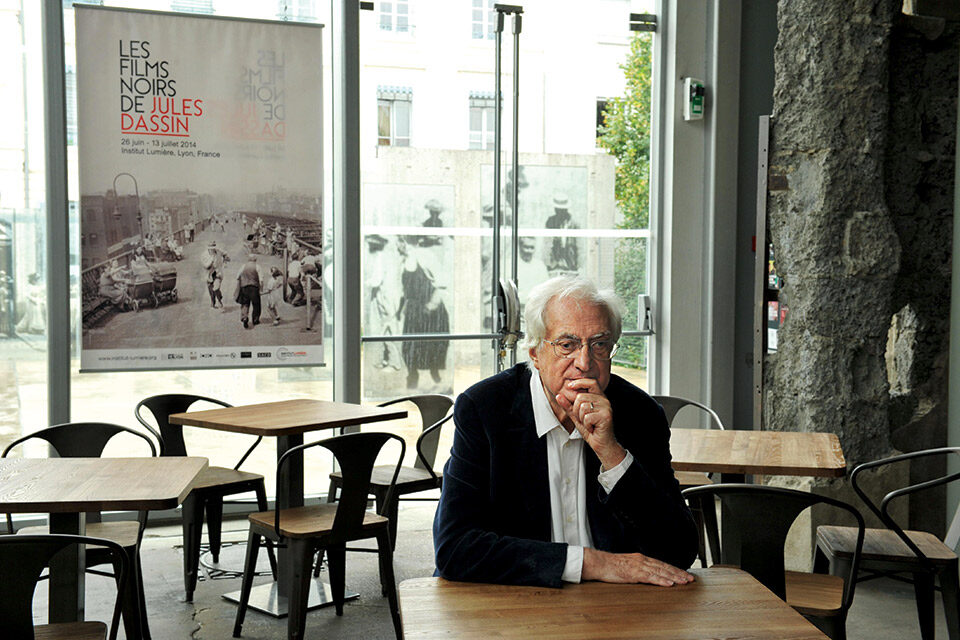
Journey Through French Cinema
The prizes themselves are always something of an anticlimax, to say nothing of the ceremony in which they’re announced, covered every year by a TV crew that never fails to jump, skip, and hiccup its way from an awkward blank stare to an interrupted swish pan to a discordant audience reaction shot. The exceptions were a visibly moved Olivier Assayas’s long-overdue award for Best Director, Cristian Mungiu’s plainspoken warning to protect serious cinema, Ken Loach’s equally urgent plea to pay close attention to the damage being incrementally done to the social fabric by privatizing capitalists, and Jean-Pierre Léaud’s acceptance of his honorary Palme d’Or. Léaud is not so much the star as the center of gravity of Albert Serra’s The Death of Louis XIV, which was shown out of competition. Serra’s film is simplicity itself—the title also serves as the synopsis—and its richness of texture and multilayered historical and philosophical musing is all centered on Léaud’s game rendering of a seemingly impossible directorial idea: a movie whose action is entirely built around a monarch lying in bed, slowly losing his senses and his energy as he dies of gangrene. This is Serra’s best film, partly because of its elegant simplicity, and partly because his vast knowledge of history and his meticulous rendering of early 18th-century sybaritic existence is given vivacity and offhand life by a great actor.
Loach’s Palme d’Or–winning I, Daniel Blake, Léaud’s performance in Serra’s film, and Bertrand Tavernier’s glorious Journey Through French Cinema in Cannes Classics offered three touching reminders of the passing of time, and three different embodiments of durability. Tavernier’s journey is a deeply personal one, at once reverent and unapologetically honest about the limitations of his heroes, the kind of close criticism that can result only from respect and intimate knowledge. It is also a shining example of what appears to be a growing genre: the documentary examination and celebration of the art of narrative cinema in the shadow of its evolution into a specialty item within the broader landscape of audiovisual entertainment. Tavernier’s celebration is a reminder of the growing coarseness of movies, and Loach’s film is a melodramatic attack on the growing coarseness of “managed care”—in the end, two manifestations of the same misbegotten moment. At the April press conference in which the selections were announced, I, Daniel Blake was described as “very Ken Loach,” which is true enough, I suppose: this is a remarkably consistent filmmaker, so much so that the inevitable mechanical plot twists, deck-stacking, and rhetorical overriding of the action have become as familiar and even beloved as the rings on your kitchen table or the broken springs under your favorite chair. But a very Ken Loach movie within the context of the current moment is quite different from very Ken Loach movies of earlier eras. The director and his longtime scenarist Paul Laverty have zeroed in on a situation that should resonate in the United States almost as deeply as it will in the U.K.: the lone individual caught in the gears of an increasingly privatized support system that is maddeningly byzantine and, as a byproduct of its attempted efficiency, casually authoritarian. Like all of Loach’s films, I, Daniel Blake is scrupulously scaled to the modest appointments and everyday lives of people hanging on by a thread, and it gets its excitement from the idiosyncrasies and shared jokes and experiences and fears of its characters. Dave Johns’s Daniel is instantly winning, and his grandiloquent and exasperated arias of disgust with the social service system are pretty well tuned to the actual experience of sitting in a fluorescent-lit labyrinth of cubicles. The film’s most devastating scene, one of the single greatest moments in all the films I saw in Cannes, involves a young mother (Hayley Squires) befriended by Daniel and takes place in a food bank—again, to describe it would spoil the impact.
Daniel is caught in a typically modern catch-22: after suffering a massive heart attack, he has been told not to work by his doctor, but is forced to go through the motions of looking for a job in order to receive benefits. His late-’30s American analogue can be found in a 1939 short story called “The Paid Nurse,” published in the left-wing modernist magazine The New Anvil. A guy named George working in a bearings factory is instructed to clean some metal machine discs with Benzol and then dry them in a 200-degree oven. When his clothes and protective gloves catch fire, he is treated with tannic acid and told by the company nurse to get back to work or else. “The men work with worse things the matter with them than that every day, she said,” George tells the neighborhood doctor to whom he appeals for help. The story was written by the actual doctor who experienced this, and it is just as concerned with the rhythm of speech and what it reveals of the lives of those speaking it as it is with the outrage of closed company systems. There is, in a word, nothing generalized about the story, which is not about a theme but about These events happening in This place to These people Right Now. The doctor-writer was better known as a poet, and for his magnum opus, a five-book poem composed over 12 years, he chose the city of Paterson, New Jersey, 10 miles away from his home in East Rutherford, as both inner and outer world—his protagonist, you might say. As he described the poem in his autobiography, “a man is indeed a city, and for the poet there are no ideas but in things.”
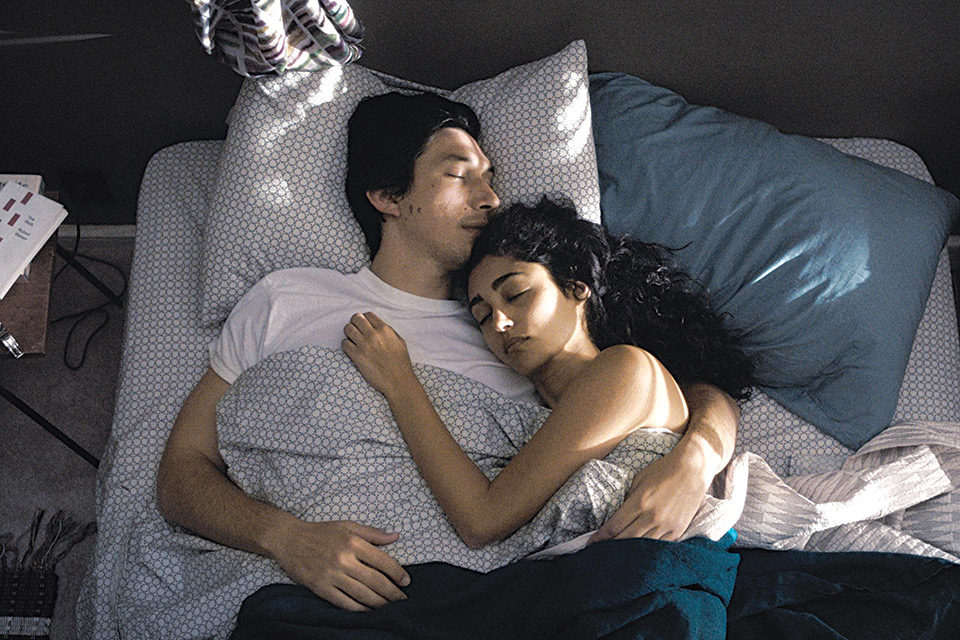
Paterson
About a year ago, when I heard the good news that Jim Jarmusch was making a movie called Paterson, I was assured by one of his associates that it had nothing to do with William Carlos Williams—“No way—it’s about a bus driver, played by Adam Driver, named Paterson, in Paterson.” He was playing possum with me—in today’s climate, you don’t spread the word that you’re making a movie about a bus driver/poet whose heroes are Williams and Frank O’Hara. And you certainly don’t talk about the fact that the action, as such, is comprised of the driver’s daily routine during a week in what would appear to be early autumn—the walk to work, the morning check-in with the disgruntled dispatcher, the bus route and the different passengers from day to day (including Moonrise Kingdom’s Jared Gilman and Kara Hayward as aspiring anarchists), the nightly dinners with his effervescent wife (Golshifteh Farahani) followed by the walking of the dog and a beer at the local bar. And you wouldn’t even whisper a word about the fact that the entire movie is keyed to Paterson’s experience and processing of these routine sights and sounds, his silent curiosity, the contrast between his hesitancy and his wife’s can-do spirit, the subtle rattling of his being when the routines are broken (by the recurring appearances of twins, the bus breaking down, a freak-out at the bar), and his creation of poetry out of the elements of his existence (the poems were actually written by Ron Padgett).
No ideas but in things… and every thing, from the particular angles of the Blue Tip matchbox that is the basis of the opening poem to the variations in visual rhythm of the different bus rides to the contrasts between the solitude of contemplation and human interaction, is rendered with the most exquisite patience and care. I can also tell you that Paterson is extremely beautiful; that it was shot (by the great Frederick Elmes, reunited with Jarmusch 11 years after Broken Flowers) on an Alexa, and that you’ll swear it’s 35; that it’s very funny; that Driver and Jarmusch are perfectly meshed; and that a perfectly good start for thinking about this seemingly small but ever-expanding movie can be found in Williams’s namesake poem, for instance: “hard to put it; an identification and a plan for action to supplant a plan for action; a taking up of slack; a dispersal and a metamorphosis.”



